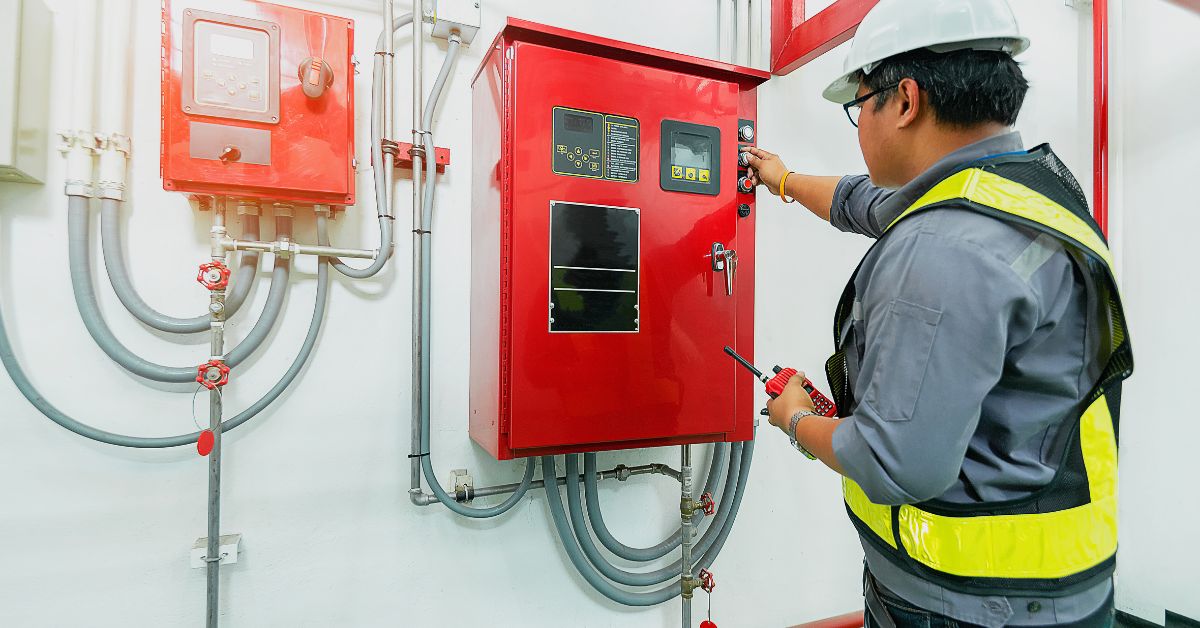The Key Components of a Commercial Fire System
Ensure the Safety of Your Commercial Building Against Fire Hazards

Ensuring the safety of a commercial building against fire hazards is crucial for protecting both property and lives. A well-structured commercial fire system is designed to detect, alert, and combat fires, minimizing potential damage and providing a safe environment for occupants.
Let's look at the key components of a commercial fire system and how they work together to protect your building.
Fire Alarms
The first line of defense in any fire system is the fire alarm. A commercial fire alarm system consists of smoke detectors, heat detectors, and manual pull stations that trigger an audible and visible alarm when a potential fire is detected. These alarms are connected to a central control panel that monitors their status and alerts emergency services if necessary.
Smoke detectors use either ionization or photoelectric technology to detect smoke particles in the air. Heat detectors sense abnormally high temperatures, while manual pull stations can be activated by occupants in case of an emergency. Regular testing and maintenance are essential for ensuring the proper functioning of these alarms.
Sprinkler Systems
Sprinkler systems are another crucial component of a commercial fire system. These systems use water to extinguish fires and prevent them from spreading. Sprinklers are typically activated when the temperature in the room reaches a certain threshold, releasing a deluge of water to suppress the fire. They are designed to contain fires until emergency services arrive, giving occupants enough time to evacuate safely.
Fire Extinguishers
Fire extinguishers provide an additional layer of protection against small fires that can be easily contained. Different types of fire extinguishers are suitable for different types of fires, such as Class A, B, C, or D fires. It's important to have the correct type of fire extinguisher in the right location to be effective in case of a fire. Regular inspections and maintenance are necessary to ensure fire extinguishers are fully charged and ready to use in case of an emergency.
Fire Suppression Systems
Fire suppression systems may be installed in areas with specialized equipment or high-value assets, such as computer rooms or kitchens. These systems use gases, chemicals, or foam to suppress fires without damaging sensitive equipment or valuable goods. They often work alongside sprinkler systems to provide comprehensive fire protection.
Emergency Lighting
During a fire emergency, visibility can become limited due to smoke and power outages. Emergency lighting ensures that occupants can safely navigate out of the building during these situations. Backup batteries power these lights and will activate automatically during a power outage.
Fire Drills
Apart from having the right equipment, regular fire drills are essential for ensuring that occupants know how to respond in case of a fire emergency. These drills should be conducted at least twice a year, and evacuation routes and procedures should be clearly marked throughout the building. Regular training can save lives in an actual emergency situation.
A commercial fire system is a complex network of different components that work together to protect buildings and their occupants from potential fire hazards. Regular maintenance, inspections, and training are crucial for ensuring the proper functioning of these systems. By investing in a well-designed commercial fire system, you can provide a safe environment for your building and its occupants.
If you need commercial fire alarm systems in Rochester, NY, Action Security Group has you covered. Our team of experts can design, install, and maintain a comprehensive fire system tailored to your specific needs. Contact us today for more information on how we can help protect your building against fire hazards.